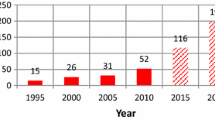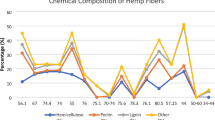Abstract
The archaeological site of Pompeii is located near modern Naples in the Italian region of Campania. As known, the ancient Roman city was mostly destroyed and buried under 4–6 m of ash and pumice in the eruption of Mount Vesuvius in 79 AD, and it remained covered until the beginnings of archaeological excavations during the second half of the XVIII century. Today, it is an UNESCO World Heritage Site and one of the most visited archaeological sites in the world. With the aim preserving a unique archaeological heritage, the Pompeii Archaeological Park is directing various projects which involve many scientists and expertise. Within this ambit of activity, ENEA has analysed the health state of the modern covering structures of Villa dei Misteri, an exceptionally well-preserved domus enriched by many precious frescoes. To qualify a standard analysis procedure applicable to similar roofing typologies, very common in the archaeological site of Pompeii, a methodology based on a multidisciplinary approach has been developed. This paper is focused on the in-depth diagnostic campaign carried out on the roof structures of the Peristylium, where both timber and reinforced concrete beams have been completely analysed. The campaign has been conducted in two subsequent steps: visual and geometrical survey and then in-situ non-destructive tests for the material characterisation. On the basis of the resulting data, a visual classification has been performed and very useful information for mechanical characterisation has been collected. Finally, a proposal of restoration intervention has been suggested.





































Similar content being viewed by others
References
Maiuri A (1937) Pompei: i nuovi scavi e la villa dei misteri. La Libreria dello Stato, Roma
Pompeii Archaeological Park (2014) Relazione di inquadramento del lavoro di verifica dello stato di conservazione delle coperture di Villa dei Misteri. Internal report, Archives of the Pompeii Archaeological Park, Pompeii
Carpani B, Marghella G, Marzo A, Candigliota E, Immordino F, Bergamasco I (2014) A methodology for the safety assessment of protective roofs covering archaeological sites: the case of the Villa dei Misteri at Pompeii. In: SAHC2014—9th international conference on structural analysis of historical construction, Mexico City
Bergamasco I, Bongiovanni G, Carpani B, Clemente P, Paciello A, Serafini S (2014) Ambient vibration analysis for the characterization of soil and coverings of Villa dei Misteri in Pompeii. In: SAHC2014—9th international conference on structural analysis of historical construction, Mexico City
Maiuri A (1942) L’ultima fase edilizia di Pompei. Istituto di studi romani, Roma
Cavalli A, Togni M (2015) Monitoring of historical timber structures: state of the art and prospective. J Civ Struct Health Monit 5:107–113
Walach D, Jaskowska-Lemanska J, Dybel P (2015) The impact of moisture content of wood on the results of non-destructive tests. For Wood Technol 92:448–454
UNI-Ente italiano di normazione (2004) 11118:2004 Cultural Heritage—Wooden artefacts—criteria for the identification of wood species, Milano
UNI-Ente italiano di normazione (2004) 11119:2004 Cultural Heritage—Wooden artefacts—Load-bearing structures—on site inpections for the diagnosis of timber members, Milano
CEN-European Committee for Standardization (2002) EN 13183-2:2002 Moisture content of a piece of sawn timber—part 2: estimation by electrical resistance method, Bruxelles
Dietsch P, Franke S, Franke B, Gamper A, Winter S (2015) Methods to determine wood moisture content and their applicability in monitoring concepts. J Civ Struct Health Monit 5:115–127
Candigliota E, Immordino F (2013) Historical heritage safeguard: remote sensing by drones for knowledge and emergency. EAI Energia ambiente e Innovazione 3–4:78–85
Faggiano B, Grippa MR, Marzo A, Mazzolani F (2012) Experimental analysis on old chestnut timber by means of non-destructive techniques. In: 11th World conference on timber engineering 2010, Trentino
Hayami N, Kobayashi S, Sugino M, Hayashi Y (2017) Study on an ultrasonic velocity of wood. All J Technol Des 23(54):469–474
Dackermann U, Crews K, Li J, Kasal B, Rinn F, Riggio M, Tannert T (2014) In situ assessment of structural timber using stress-wave measurements. Mater Struct 47(5):787–803
Kasal B, Anthony RW (2004) Advances in in situ evaluation of timber structures. Prog Struct Mat Eng 6(8):94–103
Wu S-J, Xu J-M, Li G-Y, Risto V, Lu Z-H, Wang W (2010) Use of the pylodin for assessing wood properties in standing trees of Eucalyptus clones. J For Res 21(1):68–72
Gao S, Wang X, Wiemann MC, Brashaw BK, Ross RJ, Wang L (2017) A critical analysis of methods for rapid and nondestructive determination of wood density in standing trees. Ann For Sci 74:27
Lourenço PB, Feio AO, Machado JS (2007) Chestnut wood in compression perpendicular to the grain: non-destructive correlation for test results in new and old wood. Constr Build Mater 21:1617–1627
Feio A (2006) Inspection and diagnosis of historical timber structures: NDT correlations and structural behaviour. Ph.D. thesis, Universidade do Minho, Lisboa
McCann DM, Forde MC (2011) Review of NDT methods in the assessment of concrete and masonry structures. NDT&E Int 34:71–84
Cristofaro MT, D’Ambrisi A, De Stefano M (2009) Nuovi modelli previsionali per la stima della resistenza a compressione del calcestruzzo con il metodo SonReb. In: XIII Convegno ANIDIS “L’ingegneria sismica in Italia, Bologna
Cristofaro MT, D’Ambrisi A, De Stefano M, Tanganelli M, Pucinotti R (2012) Mechanical characterization of concrete from existing buildings with SonReb method. In: Proceedings of the fifthteenth World conference on earthquake engineering, Lisboa
CEN-European Committee for Standardization (2012) EN 12504-2:2012 Testing concrete in structures - Part 2: Non-destructive testing - Determination of rebound number, Bruxelles
CEN-European Committee for Standardization (2009) EN 12504-1:2009 Testing concrete in structures - Part 1: Cored specimens - Taking, examining and testing in compression, Bruxelles
Meynink P, Samarin A (1979) Assessment of compressive strength of concrete by cylinders, cores and non-destructive tests. Met Constr 1:127–134
Ballivy G (1997) Testing of concrete in structures. Can J Civ Eng 24(5):848
Krajci L, Janotka I (2000) Measurement techniques for rapid assessment of carbonation in concrete. ACI Struct J 97(2):168–171
Anagnostopoulou V, Pournou A (2013) Correlating visual grading with NDT methods for assessing timber condition in historic buildings. Adv Mater Res 778:273–280
Acknowledgements
The activities here described have been carried out in the framework of an agreement between Pompeii Archaeological Park and ENEA.
Author information
Authors and Affiliations
Corresponding author
Rights and permissions
About this article
Cite this article
Bergamasco, I., Marzo, A., Marghella, G. et al. In-situ experimental campaign on the covering structures of “Villa dei Misteri” in Pompeii. J Civil Struct Health Monit 8, 181–197 (2018). https://doi.org/10.1007/s13349-018-0274-7
Received:
Revised:
Accepted:
Published:
Issue Date:
DOI: https://doi.org/10.1007/s13349-018-0274-7




